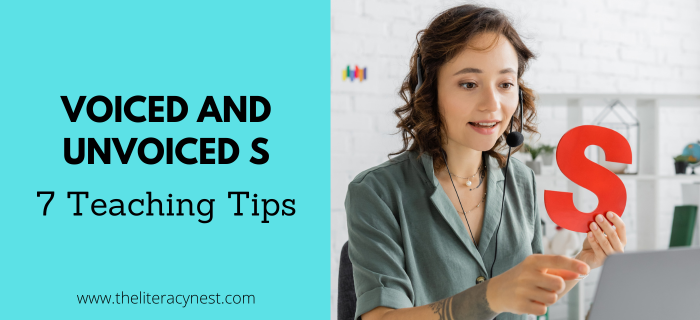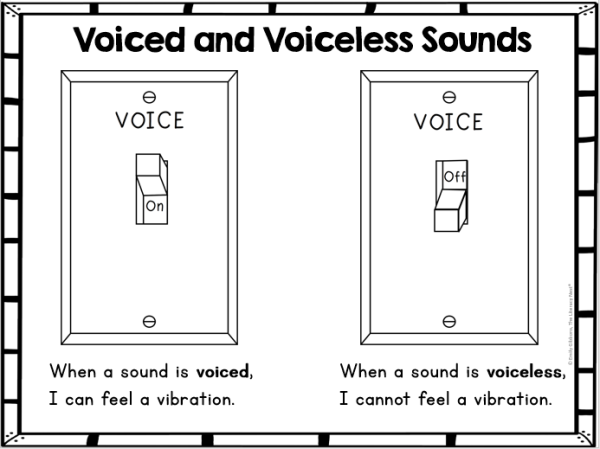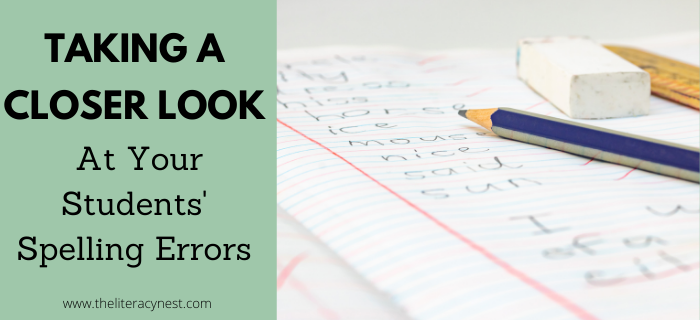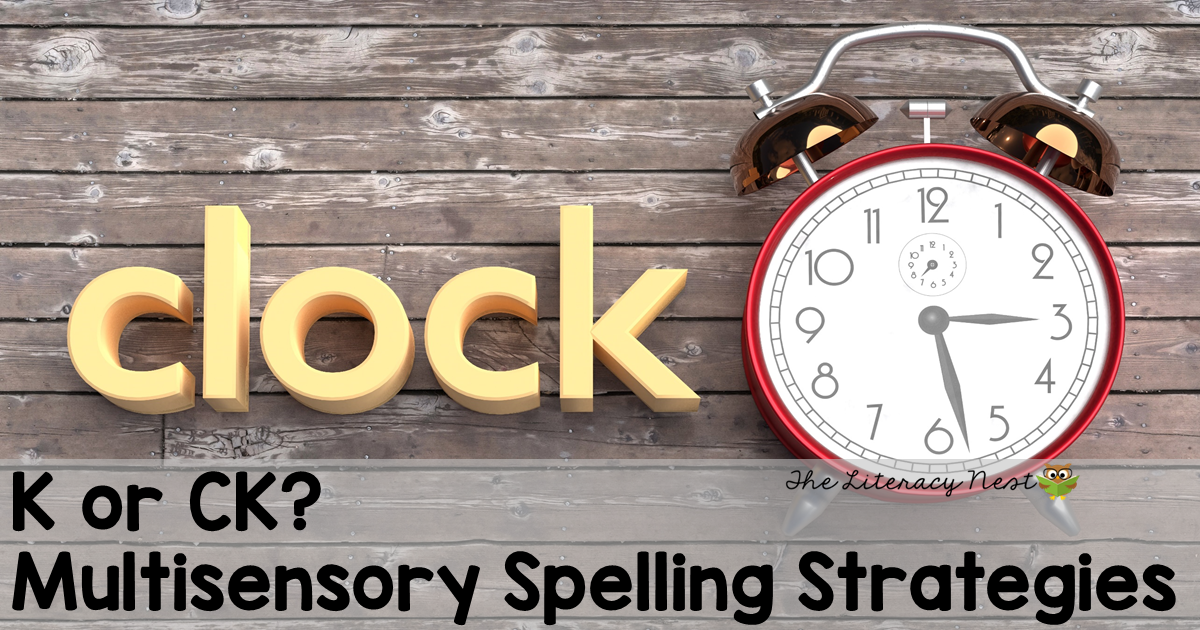Voiced and Unvoiced S: 7 Teaching Tips!

It is important to teach the voiced sound of S fairly early in the instructional sequence. Students will need the voiced S to add the suffix -s to base words or to read vowel consonant E words with S. Because voiced S is such a prevalent part of our speech, this is a concept that often comes more easily to children than one might expect. If you teach students about voiced and unvoiced consonants as part of an examination of easily confused sounds such as /f/ & /v/, /b/ & /p/, /t/ & /d/, or /ch/ & /j/, learning to differentiate between voiced and unvoiced S is a natural extension of that learning.
If you have not done other sound discrimination work, this would make a good jumping-off place. Sound discrimination is a necessary skill for encoding. Care should be taken to ensure that students are able to successfully distinguish similar sounds.
Learn more about Voiced and Voiceless Sounds in The English Language!
The Unvoiced Sound of S: When S is /s/
The unvoiced sound of S as in snake or sun is generally the first sound students think of for the letter S. S makes its unvoiced sound at the beginning of words, at the end of words when doubled, in most ending blends, and when it follows an unvoiced consonant as a suffix.
For example: S is unvoiced in the words stand, slip, and sat; S is unvoiced in words such as dress, loss, and grass; S is unvoiced in final blends such as in the word mask, list, and post. When S is used as a suffix it is unvoiced in words such as cats, slips, and snacks.
The Voiced Sound of S: When S is /z/
The voiced sound of S is found at the end of several common one-syllable words that are not floss words. They are often considered learned words such as: is, his, has, and was. S will also make its voiced sound when it occurs between two vowels as in nose, rise, and muse. When used as a suffix, S makes its voiced sound when it follows a voiced sound, either a voiced consonant or a vowel sound.
For example: dogs, clams, tubs, and days.
Download our Reading and Spelling Generalizations freebie sampler! It includes mini posters, a note-taker, and a handy cheat sheet with links to blog posts and a video with teaching tips!
Teaching Tips for Voiced and Unvoiced S
Download this printable guide for teaching voiced and unvoiced S!
As a rule of thumb, teach the unvoiced S sound to mastery before introducing the voiced sound for S. Teach students that the suffix -s can be pronounced two ways but that is always spelled -s.
1. Choose keywords
Have separate keywords for the voiced and unvoiced sounds.
It may be helpful to have additional keywords for the suffix -s such as cats and dogs, representing both the voiced and unvoiced sounds.
2. Feel the vibration
Teach children how to determine if a sound is voiced or unvoiced by feeling for vibration on the front of their throat near their Adam’s apple. Another technique is to cup your hands over your ears. A voiced sound will create an echo effect.

3. Add in auditory tasks
Focus on discrimination of voiced and unvoiced sounds as an auditory task using picture sorts or other auditory prompts. Incorporate gross motor movements to be more memorable.
4. Strive for mastery
Teach the voiced sound of S to mastery before introducing -s as a suffix.
5. Identify base word and suffix
It is important early on to teach students to identify the base word and suffix when encoding. In this way, you can nip errors in the bud, such as spelling dogs DOGZ or using T to represent the ED suffix. This can also clear up the confusion between floss words and plurals.

6. Make error correction meaningful
In my experience, students have a fairly easy time reading voiced and invoiced S correctly in words. Writing tends to be a slightly more problematic area. When a student spells a word with Z such as spelling please as PLEAZE, it is quite effective to prompt “What else can make that sound?” On a word where S makes the voiced sound as a suffix, encourage them to identify the base word and suffix, reminding them if necessary that the suffix /s/ or /z/ is always spelled with -s.
7. Word sorts
Do word sorts to help students identify spelling patterns that are either voiced or unvoiced.
Many students handle learning about voiced and unvoiced S quite easily. Students who are English language learners or who have speech articulation issues may find this concept a little bit more difficult. Paying attention to mouth formation and vibration may add an available extra layer of support for those students.
Download and display this FREE Voiced and Voiceless printable poster
Are you looking for a list to help teach voiced and unvoiced S? Word List Builder has got you covered!
Save time searching for voiced and unvoiced S words! Create customized and meaningful review, build your folder of words, create templates and games, and much more in Word List Builder.










